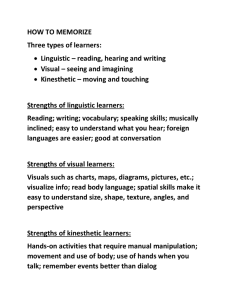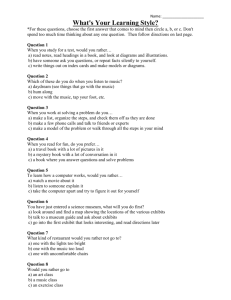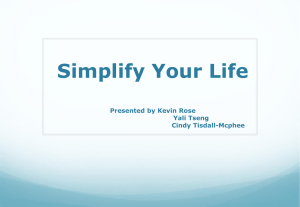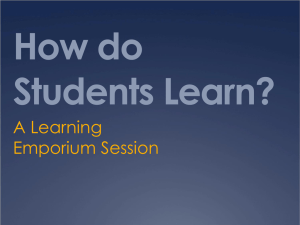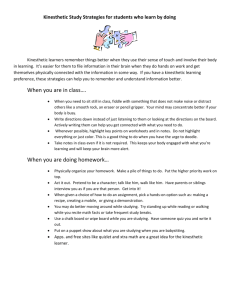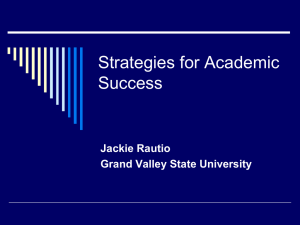Right_and_kinesthetic_methods
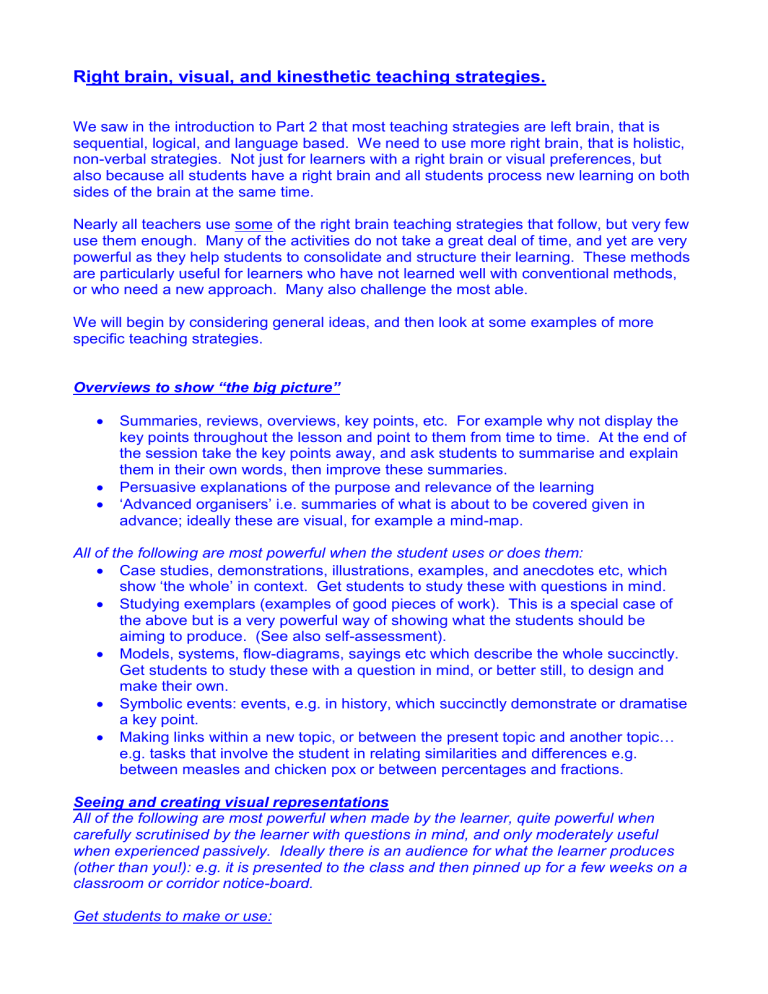
Right brain, visual, and kinesthetic teaching strategies.
We saw in the introduction to Part 2 that most teaching strategies are left brain, that is sequential, logical, and language based. We need to use more right brain, that is holistic, non-verbal strategies. Not just for learners with a right brain or visual preferences, but also because all students have a right brain and all students process new learning on both sides of the brain at the same time.
Nearly all teachers use some of the right brain teaching strategies that follow, but very few use them enough. Many of the activities do not take a great deal of time, and yet are very powerful as they help students to consolidate and structure their learning. These methods are particularly useful for learners who have not learned well with conventional methods, or who need a new approach. Many also challenge the most able.
We will begin by considering general ideas, and then look at some examples of more specific teaching strategies.
Overviews to show “the big picture”
Summaries, reviews, overviews, key points, etc. For example why not display the key points throughout the lesson and point to them from time to time. At the end of the session take the key points away, and ask students to summarise and explain them in their own words, then improve these summaries.
Persuasive explanations of the purpose and relevance of the learning
‘Advanced organisers’ i.e. summaries of what is about to be covered given in advance; ideally these are visual, for example a mind-map.
All of the following are most powerful when the student uses or does them:
Case studies, demonstrations, illustrations, examples, and anecdotes etc, which show ‘the whole’ in context. Get students to study these with questions in mind.
Studying exemplars (examples of good pieces of work). This is a special case of the above but is a very powerful way of showing what the students should be aiming to produce. (See also self-assessment).
Models, systems, flow-diagrams, sayings etc which describe the whole succinctly.
Get students to study these with a question in mind, or better still, to design and make their own.
Symbolic events: events, e.g. in history, which succinctly demonstrate or dramatise a key point.
Making links within a n ew topic, or between the present topic and another topic… e.g. tasks that involve the student in relating similarities and differences e.g. between measles and chicken pox or between percentages and fractions.
Seeing and creating visual representations
All of the following are most powerful when made by the learner, quite powerful when carefully scrutinised by the learner with questions in mind, and only moderately useful when experienced passively. Ideally there is an audience for what the learner produces
(other than you!): e.g. it is presented to the class and then pinned up for a few weeks on a classroom or corridor notice-board.
Get students to make or use:
Mind maps, especially when used to summarise a topic. Learner’s attempts are relatively easily improved after they have compared theirs with a model mind-map provided by you. Learners can present their maps to each other or the class.
Images, pictures, photographs, posters, diagrams, shapes and patterns, drawings, cartoons, overhead projector transparencies, graphs, charts, symbols, icons, logos, leaflets, etc which make useful or important points. (their value is in their power to explain and persuade and affect etc.)
‘Time lines’ that show the development of something with time pictorially
Colour coding for related but different concepts e.g. for handouts, transparencies, or projected images. Student’s folders can be labelled or indexed using coloured card or paper, sticky coloured blobs, or icons.
Colour for impact
Videos and CD Rom images
Models and the real thing
Visually interesting websites, animations, computer simulations and other computer visuals, PowerPoint presentations that are not too text dependent. Get the students to make all these and show them to the class. Then they can go on the intranet or internet. (See part 4)
Etc
Other right brain representations include the following.
Using representations that point out similarities and differences
Metaphor, analogy, simile, and symbol are all very powerful explaining tools as they represent new material in a vivid and easily assimilated way. They build new learning on existing learning so they are very ‘constructivist’ as explained in chapter 1. They point out links and similarities rather than differences, and give students the ‘big picture’.
‘Electricity is like water flowing in a pipe’
‘Our DNA is like an assembly manual for our body’ etc.
Giving students tasks that require them to use their imagination:
“What would it have been like to be a monk in an Abbey?”
“Imagine you are a water molecule in a heated saucepan...”
“What would happen if….?”
Problem solving tasks etc.
Making use of acting/role play/simulation
These methods are explained in more detail in chapter 20. You could also give students teaching, checking, or board writing roles.
Giving students tasks that evoke feelings
Making use of emotion, humour, and appealing to senses, personal feelings and associations.
“What do you think would most anger you if you were a wheelchair user?”
“What would it have been like being poor in London in the 1830s? What do you think the smells and tastes would have been like? What would have most worried you?”
“What might worry a customer when they first checked in to your hotel?”
Giving students direct experiences
Doing things physically, hands on: manipulating, moving etc. Practicals, experiments, explorations, research, etc. Moving about the classroom.
Handling primary sources and real objects
Multi-sensory experiences that include seeing, handling, smelling, tasting, and hearing,
sounds, rhythm, and music, etc.
Excursions, visits, field trips, ‘shadowing’ someone at work, etc (see the short account later in this section)
Finding out for themselves.
Examples of activities to create visual representations
What follows are just to give you the idea; do devise your own approaches. Note that:
These activities are all active rather than passive.
There is an audience for the product that the students make.
In order to make a visual representation you must first understand the topic, so the method is ‘constructivist’ as explained in chapter 1.
The tasks below should be set before the topic is taught so students can begin thinking about how to represent the material visually while it is being learned.
Importing Images from the Internet
The Internet stores a vast treasury of images that can be used to assist the following activities. There will be images for any topic imaginable; I found at least hundreds of images for unlikely search words such as ‘invoice’ ‘alliteration’ and ‘diarrhoea’!
Professionally produced images such as photographs, cartoons and diagrams can be found using the Google (and other search engines) by clicking on ‘images’ near where you type your search terms. Many of the images will come from web pages of course, and can be referenced in the usual way to avoid at least some copyright problems. Students can then copy and paste them in the usual way into most computer applications. They can then contribute to posters, web-pages and handouts they can usually be made much bigger or smaller ifnecessary to create a really vivid and impressive piece of work.
Creating a Flipchart-Poster or Model
Part 1. Students work in groups each creating a visual representation that summarises the key points of a topic that they have just completed. This could be in the form of a
‘concept-map’ or flow diagram for example. Indeed they could use any combination of the approaches described under ‘ Seeing and creating visual representations’ above on a flipchart, or as a paper and cardboard model. If each group first plans what they will make in outline, then individual students can work separately on A4 or A3 sheets and then stick these together to make the complete flipchart-poster or model.
Part 2: The groups each present and explain their work to the class. This will usually require preparation to decide who will say what. You might like to give them specific tasks so the presentations are not too similar: ‘I want you to explain this osmosis diagram very carefully’
The work can then be displayed using the class notice-board for a few weeks, and then used for review activities. The work could also be displayed on a corridor notice-board, or other public display space. It could even be displayed in an appropriate venue in the community, for example a poster on childhood diseases could be displayed in the foyer of a health centre. A real audience for students’ work really motivates them.
Creating an Intranet Website
Students create a website that explains and summarises the key points of a topic using imported images as described above. Again with careful planning and co-ordination a group of students can parcel out different pages of their site for individual group members to create. This is a great homework, and th e results can be displayed on the institution’s intranet, or on the Internet.
Again, consider a ‘part 2’ like that above where students use a laptop and data projector to display and explain their site.
Creating an Exhibition or Video
Students, or a whole class, can create an exhibition on a topic to be displayed on exhibition boards. This can be displayed in the college corridors or in other public spaces.
If you make it a focus for parent’s evenings then your students might even persuade their parents to come!
Alternatively students can create a video that summarises their work on a unit. Computers can now be used to edit videos quite easily though the process can be very time consuming.
Visual essay planning: ‘Let’s see what we think’
This method works at any academic level and is excellent for teaching students to explore a complex topic or to plan their writing
1. The teacher gives the class a meaty question, essay question, or assignment task.
2. Students work alone to brainstorm relevant ideas, facts, issues etc, looking back over their notes and using other sources.
3. Students get into pairs to compare their ideas, and together they write agreed points onto sticky message pads. They could use colour coding, for example green pads for arguments in favour, and red for those against.
4. Working in pairs or fours or even as a whole class, students now stick their message pad points onto a white-board, notice-board, or onto flipchart paper.
5. Students now structure their points, by putting related ones together into clusters.
They then encircle these clusters and label them. They can also draw arrows etc to show relations between points and clusters such as cause and effect.
6. Once their points and arguments are structured they can make a personal copy in the form of a mind-map or other essay plan. This essay may or may not be written, the planning is an excellent learning activity in its own right! before
Caused by
after
So…..
There are many advantages in representing ideas and points as mobile objects. Shy students are often happy to write what they dare not say to the class, so it captures ideas from everyone. They make our thinking visible and this promotes discussion. Labelling clusters, and showing the relations between them helps students to generalise and deal with other abstract thinking. Clusters can themselves be clustered to create very generalised groupings and concepts. Again, these need to be labelled.
It is often much easier for learners to organise ideas and arguments by moving objects, than in their head!
If you like this approach see www.inspirationresources.com for software and hardware to assist the process.
Some quotes from brain expert Eric Jensen
“…knowledge about the brain and standard education practices have tr aditionally been born of different words, it’s time for a marriage” Brain
Based Learning
Learning strategies that involve kinesthetic experiences
In the introduction to Part 2 we considered the kinaesthetic learning style. This involves movement and so a different part of the brain to visual or verbal learning. I have put the most easily used strategies at the start of this list, though the later ones are much better for kinesthetic learners with a strong preference. Some teachers worry about the loss of control involved with these later strategies but if they are well managed they can work very well, and can get great concentration and involvement from learners. Many students hugely enjoy these strategies and remember them vividly. Consider a careful verbal review after using these strategies: ‘what have we learned?’.
Again we will consider some very general strategies first.
Sedate kinesthetic methods
Manipulate or manage information
Underline or highlight key points in a piece of text.
Play ‘Decisions-decisions’: these are card-sorting exercises, see page ??? These can also be adapted to match, group, or rank real objects
Research and collect materials to create an exhibition
A student manages a group of students while they complete a task
Practicals
Class or individual practical activities of any kind;
Make a model or the real thing, handle it, or take it apart to see how it works etc
Use tools; computers; phone; etc.
Peer teaching:
Doing a demonstration for other students to watch
Giving an explanation or giving a presentation using OHTs etc.
Writing on the board; flipchart; or OHP etc for the class
Operating an OHP, laptop and projector; video etc for you or the class. Some students like to have a class responsibility, and will happily give out or collect in materials and equipment for example.
Full movement methods:
Take on physical roles: Here is an example of this approach from office studies. First s tudents take on roles such as ‘invoice’ ‘purchase order’ ‘credit note’ and parts of the classroom are labelled ‘accounts department’; ‘company bank account’ etc. Then students must arrange themselves or move in accordance with the situation described by the teacher:
“I’m raising a purchase order for £600 for computer equipment.”
“The computer supplier is submitting an invoice for the £600.”
Students must then move to show the flow of documents and money.
Students can then rank or group themselves in response to other teacher demands:
“I want all company generated documents over by the window and all customer generated documents over by the door”
“Now put yourselves in the order you would be generated if a customer put in an order.”
Similarly students can take on the roles of enzymes, hormones, and organs in the body and act out the flow in situations given by the teacher. Students are allowed to instruct and correct each other. “Hey, you’re created in the pancreas, what are you doing in my hypothalamus?”
Kinesthetic ‘Decisions-decisions’
“Decisions-decisions” was considered in chapter 21, but here we match, group, or rank students rather than cards rather like the example above. Students are given roles, marked by a hat or a big badge, and they must match, group, and rank or sequence themselves depending on your orders.
Visitors and visits
Visitors and visits are amongst the most vivid, enjoyable and best remembered of teaching methods. Students love them, as long as they are well planned. They bring the real world into teaching and learning, provide specialist experiences and expertise, and reveal real issues and debates.
Visitors
Studying urban crime? – why not ask a policeman to visit? Studying suicide? – why not ask someone from the Samaritans to talk to your group? Thousands of organisations can act as a living resource for you: what about Oxfam, Action on Smoking and
Health, or the British Association for the Advancement of Science? There are many expert speakers eager to get their message across
– why not use them?
Why not get the students to arrange the visit, perhaps setting this as an assignment.
They will enjoy the responsibility, and their sense of being in control will help make them feel committed and positive about the visit.
Who will write the letters or make the phone calls? How will the visitor be briefed before she comes? Who will meet the visitor? Who will make her coffee? Who will introduce her? Who will thank her on behalf of the class after her talk?
She may need a map, and will need to know where to go and whom to ask for when
she arrives. She will also need to know something of the group, its size, prior learning, and age. She may also need specialist equipment, and will certainly want to know for how long she will be expected to speak.
The group will need time to prepare for the visit. What questions will they ask their visitor, and who will ask them? It is better to spread the questions among the class members than have one or two students asking them all. Questions need to be open rather than closed, and you will need a strategy that prevents embarrassing silences.
If students are arranging the visit, have a brainstorming session to ‘discover’ the points raised in the previous paragraphs. Then the group can decide how to meet these needs and who will compose the briefing letter.
It may be advisable to monitor your students’ arrangements to avoid embarrassments!
Visits
Talk to the school or college management to resolve such issues as levels of supervision, insurance, consent forms, and so on. Such details are very important, but vary considerably from institution to institution, so I do not cover them here. It is sensible to take students on a visit only if you have the agreement of a senior member of staff in your school or co llege, and if you follow the institution’s procedures for visits.
Having said that, the procedures are usually very well documented and easy to follow, and there will be plenty of advice if you need it.
A pre-visit will help you to make successful arrangements. Many places to visit have education officers, who will do the teaching for you! Others have official guides, or activity sheets and other helpful resources, but you need to know about these before the visit. If such help is not available, consider devising your own activity sheets, or at least giving students questions they can answer by investigations during their trip.
Before setting off ensure you have a full list of party members, with their home addresses and phone numbers. Consent letters may not be necessary, but if they are, make sure you have them from all students. Take any letters confirming essential arrangements, and details of the trip, along with insurance forms and a first aid kit. It is usual to have at least one extra teacher or adult helper on a visit, unless the group is small.
Reference and further reading
A Good Practice Guide: Health and Safety of Pupils on Educational Visits
The above can be downloaded free from the DfeS website
www.dfes.gov.uk/h_s_ev/
References
(((still working on these suggestions gratefully received)))
Cynthia Klein Learning on both sides of the brain
